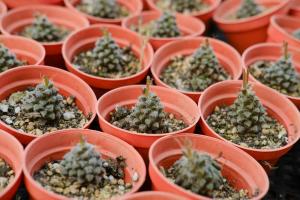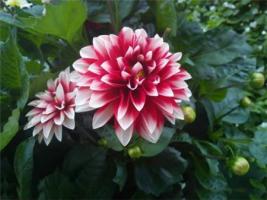When to Plant Lantana
Lantana is a popular plant that is widely grown for its colorful flowers and ability to attract butterflies and bees. If you are planning to grow lantana in your garden, it is important to know when to plant it to ensure that it thrives in your local climate. In this article, we will explore the best time to plant lantana and provide some tips for growing it successfully.
Planting Lantana in the Spring
Spring is the most ideal time to plant lantana. This is because the weather is usually warm and sunny, which provides the perfect environment for lantana to grow. In addition, spring allows the plant to develop strong roots and establish itself before the hot summer weather arrives. When planting lantana in the spring, it is important to provide it with well-draining soil, regular watering, and plenty of sunlight.
Planting Lantana in the Summer
Although planting lantana in the summer is possible, it can be a bit more challenging. This is because the hot and dry weather can cause stress to the plant, making it difficult for it to establish strong roots. If you do choose to plant lantana in the summer, it is important to choose a location that receives partial shade during the hottest part of the day. In addition, be sure to water the plant deeply and regularly to prevent it from drying out.
Planting Lantana in the Fall
Fall is another good time to plant lantana. The cooler temperatures and lower levels of sunlight provide the plant with a more comfortable environment to establish itself. This also allows the plant to develop its roots before the cold winter weather arrives. However, it is important to plant lantana in the early fall, before the first frost arrives. This will give the plant enough time to grow and establish itself before winter.
Tips for Growing Lantana Successfully
To ensure that lantana thrives in your garden, there are a few tips that you can follow:
1. Choose a well-draining soil: Lantana prefers soil that is well-draining and does not become waterlogged. This will help prevent root rot and other issues that can arise from overly wet soil.
2. Provide regular watering: Lantana needs regular watering to establish its roots and grow properly. Be sure to water deeply and regularly, especially during dry spells or hot weather.
3. Provide plenty of sunlight: Lantana loves bright, direct sunlight. Choose a location that receives at least six hours of sunlight per day.
4. Prune regularly: Lantana benefits from regular pruning, which helps it maintain a neat and tidy appearance. Prune off dead flowers and stems regularly to encourage new growth.
In conclusion, lantana is a beautiful and versatile plant that is perfect for adding color and attracting wildlife to your garden. By planting it at the right time and following these tips, you can enjoy a stunning display of lantana blooms for years to come.

 how many times do yo...
how many times do yo... how many planted tre...
how many planted tre... how many pine trees ...
how many pine trees ... how many pecan trees...
how many pecan trees... how many plants comp...
how many plants comp... how many plants can ...
how many plants can ... how many plants and ...
how many plants and ... how many pepper plan...
how many pepper plan...






























